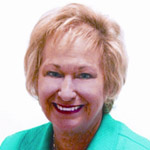Elimination of biofilm

Conventional methods of microbial control have proven inadequate when associated with biofilm. The most effective way to combat biofilm is to perform regular, preventative maintenance. The goal is not to allow biofilm to form because it is much harder to kill the organisms once they are established under the biofilm coating. Maintaining optimal sanitizer residual is critical at all times. The ideal range for chlorine disinfection is 3 to 5 ppm. This residual should be monitored regularly via manual testing (public pools should be tested at least three times per day). Further, installation of an automatic continuous-chemical-feed system, with constant monitoring, will allow for a chemical control analyzing system. In addition, daily brushing of the tile, walls, and floors should also be performed. Since pool surfaces are a common place for biofilm to attach, brushing will release the biofilm from pool surfaces where the disinfection can kill the bacteria.
Operators must also perform a thorough cleaning of the filtration system as biofilm can grow in the sand and filter laterals. Insufficient backwashing of sand filters have been found to promote the growth of biofilm. Backwashing sand filters on a regular basis are necessary; when the pressure gauge increases 0.055 to 0.068 MPa (8 to 10 pounds per square inch [psi]), it is time to backwash the filter. Be sure to backwash sufficiently until the waste water runs clear in the site glass. There are some treatment products now available that can be used to clean the biofilm. These are usually required in high bather load environments. These products are effective, but take a qualified operator to use them efficiently. It may require removal of the sand after the treatment.
For cartridge and diatomaceous earth (DE) filters, be sure to clean the fibres properly by degreasing the media prior to any acid washing. Some operators also soak the cartridges and grids in chlorinated water prior to placing them back into the filter vessel.
Another recommendation is to raise the chlorine level to 10 ppm in hot tubs on a weekly basis or after high bather load incidences and circulate the high chlorine residual for at least one hour. In any case, be aware of evidence of biofilm growth if pools and hot tubs are not maintained efficiently.
Residential pool issues
While the focus of this article may lead to the perception there is no issue in the residential pool market, this is incorrect. Numerous studies have shown all hot water environments to promote biofilm growth, thus leading to P. aeruginosa, ‘hot tub rash,’ and L. pneumophila. Therefore, without proper care, every ‘self-contained’ (portable) hot tub is susceptible to biofilm growth and bacterial infections. In fact, the bubbling action created by blowers and air jets, which bring mists and vapours to the surface, enhance the potential for L. pneumophila. All pool/hot tub dealers and service professionals in the residential market should be sure to provide their clients with specific instructions on proper maintenance and water chemical treatments. For example, maintaining a chlorine or bromine residual at all times, removing the cover periodically to ‘let the hot tub breathe,’ and cleaning the filter and housing is recommended.
The responsibility of pool and hot tub professionals is to provide all owners with an understanding of the effects of biofilm and conditions such as P. aeruginosa and L. pneumophila. The bathing public should be informed of the risks involved whereby offering them the most recent studies to ensure a safe and healthy bather experience. This can be done without imposing fear; rather, by sharing proper education on the use and care of their pool and hot tub environment for years of healthy enjoyment.
 Connie Gibson Centrella, MBA, is a professor and program director for the online Aquatic Engineering Degree Program at Keiser University eCampus. She is also the director of education for Team Horner as well as a sustainability officer, having been certified in the principles of ‘green’ and sustainable business practices. Centrella, an industry veteran with more than 40 years of experience in the aquatics field, is a five-time recipient of the Evelyn C. Keiser Teaching Excellence Award ‘Instructor of Distinction.’ She is also a former pool builder with extensive knowledge in pool construction, equipment installation and manufacturing, and a National Swimming Pool Foundation (NSPF) certified pool/spa operator instructor, having trained more than 1,850 pool service technicians, retailers and instructors worldwide in the past 10 years.
Connie Gibson Centrella, MBA, is a professor and program director for the online Aquatic Engineering Degree Program at Keiser University eCampus. She is also the director of education for Team Horner as well as a sustainability officer, having been certified in the principles of ‘green’ and sustainable business practices. Centrella, an industry veteran with more than 40 years of experience in the aquatics field, is a five-time recipient of the Evelyn C. Keiser Teaching Excellence Award ‘Instructor of Distinction.’ She is also a former pool builder with extensive knowledge in pool construction, equipment installation and manufacturing, and a National Swimming Pool Foundation (NSPF) certified pool/spa operator instructor, having trained more than 1,850 pool service technicians, retailers and instructors worldwide in the past 10 years.






